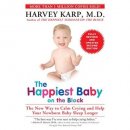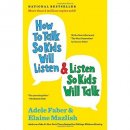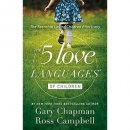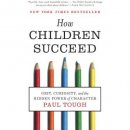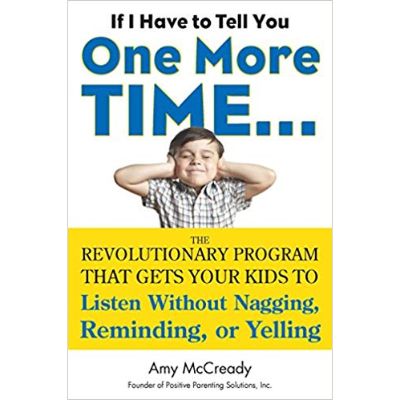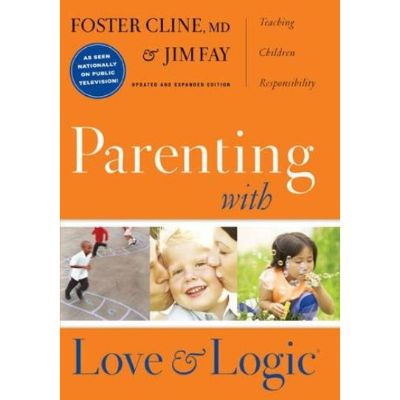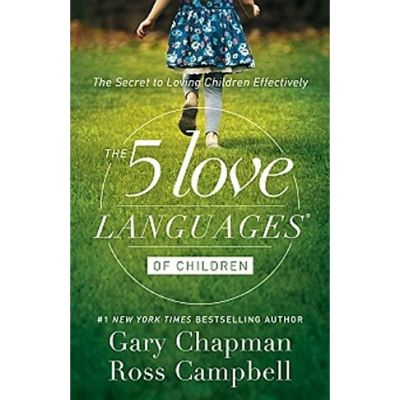10 Best Parenting Books on Kids & Toddlers Compared in 2024
If you are going to read a parenting book then you totally want it to be worth your time. The book should be able to provide you with tools that are effective and ideas that you can use. It could leave you feeling better than you did before you read it, but not left feeling like the plan is too complex. Parenting books should be designed to make you feel good about what parenting style that you have and how to improve on that. This list does just that. It is a list of great parenting books that guide parents through every type of challenge they may experience. These books are some of the best on the market.
In a Hurry? The test winner after 26 hrs of research

Teaches methods to empower children in a positive direction
Describes and teaches Positive Parenting techniques
Provides virtual toolbox of parenting strategies
Allows you to connect with children in a new way
Promotes empowerment throughout daily life

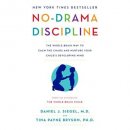
-
 If I Have to Tell You One More Time...
If I Have to Tell You One More Time...
-
 The Happiest Baby on the Block
The Happiest Baby on the Block
-
 2-3 Magic
2-3 Magic
-
 The Whole-Brain Child
The Whole-Brain Child
-
 What to Expect in the First Year
What to Expect in the First Year
-
 No-Drama Discipline: The Whole-Brain Way to Calm the Chaos and Nurture Your Child's Developing Mind
No-Drama Discipline: The Whole-Brain Way to Calm the Chaos and Nurture Your Child's Developing Mind
-
 Parenting With Love And Logic
Parenting With Love And Logic
-
 How to Talk So Kids Will Listen & Listen So Kids Will Talk
How to Talk So Kids Will Listen & Listen So Kids Will Talk
-
 The 5 Love Languages of Children
The 5 Love Languages of Children
-
 How Children Succeed
How Children Succeed
10 Best Parenting Books Reviewed
1. If I Have to Tell You One More Time...
Teaches methods to empower children in a positive direction
Describes and teaches Positive Parenting techniques
Provides virtual toolbox of parenting strategies
Allows you to connect with children in a new way
Promotes empowerment throughout daily life
Techniques can be hard to follow with multiple children
Control and responsibility to follow directions is left up to the kid without negative repercussions
Do your kids yell, nag, and just push you to your limits a million times a day? Then this is the book for you. It teaches you ways to be able to get them to do their homework, have them get ready for school on time, and listen respectfully. It does not teach about those reparative methods of counting to three, using timeouts, or the last resort nagging.
Read moreEffectiveness
It is an outline of a course of positive parenting solutions. These solutions are proven to be a scream and nag-free program that is effective and will correct your child’s bad behavior before it even starts. The book draws on the ‘Adlerian psychology and Positive Discipline” methods. These methods focus on the idea that every person has a basic feeling that they need to feel connected and empowered. Children are not any different and when that need is not meet they feel the need to act in a negative manner. In the book, the author supplies readers with strategies that they can use with their children to empower and connect with them in a positive manner. The positivity will not only teach them to be well-behaved children but will make effective adults.
Style
Positive parenting is a technique that not only empowers children, but it also teaches parents how to empower themselves as well. These methods are not only effective for children and their behaviors but soon you will find yourself using the methods in other aspects of life. The methods will not only make you a successful parent but empower your life in a more positive way.
Value
Positive parenting is a wonderful technique that when implemented can work like a dream. Starting at a young age and working to empower your children will provide them with a lifetime of positivity.
2. The Happiest Baby on the Block
Transform fussy babies to happy babies
Describes four revolutionary concepts
Features insight on bed sharing, swaddling, sleep methods, and breastfeeding
Offers sensible effective advice
Promotes healthy happy parent-baby bonding
Teaching methods are very reparative and basic
Reading level and vocabulary are low
People love the idea of happy babies so much, there’s an entire yoga pose dedicated to it (looking at you, Ananda Balasana). In his revised and updated book about soothing babies and increasing healthy sleep, Dr. Harvey Karp discusses his technique by breaking it down into four easy-to-follow concepts: a baby’s desire for a womb-like environment in their early months (“the fourth trimester”), the self-soothing reflex with which babies are born, how to activate that calming reflex (with five different approaches), and how to combine different methods to calm even fussy, colicky little ones. The latest edition features opinions and information on bedsharing, breastfeeding, SIDS risks, and swaddling, so you’ll feel educated and ready to tackle common obstacles.
Read moreEffectiveness
The methods will not only help you soothe your baby, but it will also help them increase their sleeping time. This fully revised and updated version of the book offers the newest insights on bed sharing, swaddling, sleep methods, and breastfeeding. The book describes these methods and concepts through four detailed chapters. With the advice of Dr. Harp, the author, you will transform even your fussiest baby to one of your happiest.
Style
Parenting a young infant is one of the biggest challenges that some parents will ever face especially when they are fussy and won't sleep. Learning methods that will not only help baby sleep better but be happier when they are awake will prove to make both parents and baby have a healthier and stronger bond.
Value
Tips and tools on how to help your baby sleep better and what to do when they are crying is so helpful. There is nothing worse than feeling like a helpless parent. This book is up to date on the methods and concepts that are used by everyday parents and is helpful real-life advice.
3. 2-3 Magic
Features quick, effective, simple parenting techniques
Complex parenting has broken down into three steps
Tools can be used in everyday parenting, plus complex situations
Develops smarter, healthier, and happier families
Promotes parent-child relationships
Parenting method more effective for children over the age of four
Promotes ‘alone’ time method without describing why it is effective
A simple book that offers a supportive and effective way to parent your child. The book focuses on an effective way to actively dripline child that will really work. This is a life-changing parenting method. The book has been designed and displays methods have been created by counselors and child psychologists.
Read moreEffectiveness
Selling over 1.8 million copies this 6th edition is listed as a best seller and offers over 20 years of research completed by the author, Thomas W. Phelan, Ph.D. The methods are easy to use and help parents not only become effective parents but also allows them to connect more deeply with their children. The tasks of the book are broken down into three straightforward steps that parents can use in every day and virtually in every parenting scenario. It covers everything from chores to talking back. With this program, you will find that you are not only happier, but your child is too. Plus it is also proven to aid in raising smarter, healthier, happier, and funnier kids.
Style
Becoming an effective parent is one of the challenges that many faces each day. Using a simple and straightforward method is a way that everyone in the family can benefit. It not only is effective for the dripline factor but will also change the relationship that you have with your children. You will soon find yourself on the same ‘team’ as your child instead of battling each other.
Value
The straightforward three-step parenting method and technique is really simple to follow. Using it is very easy and when your children receive the same results no matter what the situation.
4. The Whole-Brain Child
Features age-appropriate strategies for everyday struggles
Beautiful illustrations are designed to help your child understand complex concepts
Provides an understanding of how and why your child’s brain works
Focuses on ways to turn tantrums into growth
Several reviewers report that this book tends to cover similar topics over and over again and new advice is sparse
Simplistic scenarios may not conform to every unique situation or individual child
When your child is young, it is common sense to know that they’re brain is still developing. In the past, information led us to believe that the human brain stops developing around 12 years old. We now know through new research that the brain’s growth really does not slow or stop until closer to age 25 at which point the critical parts involved with decision-making are fully formed. If you remember what it was like to be a child or even a teenager, you can understand that these critical unformed pathways can truly define how your child behaves or doesn’t, during their formative years.
Read moreEffectiveness
The Whole-Brain Child by author Daniel J. Siegel steps in where your previous knowledge may fall off. This book presents an easy-to-understand explanation of how the right and left sides of your child’s brain function, together and individually, during their toddler and young school-age years. Have ever wondered why your 2-year-old threw a tantrum because she wanted the blue plate and it was dirty? Or how to discipline your 3-year-old when he just won’t stop hitting? Chock full of tested and true methods to curb and redirect tantrums and help your little one process emotions, this book is a welcome addition to any struggling parent’s bookcase.
Style
Your child has two different types of brain functions which this book helpfully describes as their "upstairs" and "downstairs" brain. The upstairs refers to the prefrontal cortex, the part of your little one’s brain that controls and manages emotions. This section of the brain is still growing and developing during the toddler and preschool age, forming new pathways and connections with every new experience. Because this critical region is not yet fully developed, your child will have a hard time understanding and redirecting their emotions which can lead to tantrums. Fortunately, this book has a plethora of techniques and tactics that you can utilize to help your child calm down and shift into their downstairs brain. This can also help you anticipate behavioral changes and shifts and prepare for them, helping your child feel more secure as well as strengthening your familial bonds.
Value
This book does a great job explaining some of the science and reasoning behind our children’s actions and how the differences between left-brain and right-brain thinking cannot only cause disruptions in your child’s life but also correct them.
5. What to Expect in the First Year
Illustrations for proper baby care
Information on safety and preparing your home
Features segments meant specifically to address parents’ needs
Over 11 million copies sold
Intuitive layout
Some users felt there’s too much fluff to wade through in the writing style
This edition is from 2014 and so several years old
If you’ve ever joked about writing an operational manual about yourself or someone you love, you might enjoy knowing that there is, in fact, a series of books designed to be the equivalent of a baby tutorial. Engine trouble (colick got them gassy)? Want to know the best kinds of fuel (food)? Your sweet pea can seem complicated and daunting but “What to Expect in the First Year” tackles common problems and even some of the rarer ones no one talks about. Educate yourself about crib safety, proper sleeping practices, nutritional needs, and more. This book has been revised to reflect recent studies and safety guidelines as of 2014. With over 11 million copies in print, this book is a staple in new parents’ libraries, and with good reason.
Read moreEffectiveness
This book lays out information in an easily accessible and well-organized fashion. “For Parents” boxes focus specifically on the needs and apprehensions of moms and dads. Illustrations help to demonstrate various techniques and safety tips. And studies and data regarding the latest recommendations in food, sleep, screentime, and more, are all laid out in a digestible manner.
Style
This book takes several different approaches in the way it handles delivering information. A month-by-month guide sets up landmarks in development and what to be expecting at various ages. Children develop quickly and are constantly changing in their first years, so knowing the basic milestones they should be reaching can help you gage whether your child might need extra attention in any area. There are also question and answer sections and various graphs and illustrations to help demonstrate proper baby care. A few users would have preferred more factual and concise answers, as the book does sometimes take a conversational tone.
Value
We know this edition is about five years old, but it still comes highly recommended by those who are currently using it. Most of the information is still relevant and if you have any concerns about new studies, a quick google search will show you if you should do additional reading, most of the time! It’s priced pretty fairly, certainly falling below the average for many books of this length and caliber. It’s available via Kindle, Audiobook, Audio CD, and paperback.
6. No-Drama Discipline: The Whole-Brain Way to Calm the Chaos and Nurture Your Child's Developing Mind
Effective approach and methods to discipline
Highlights the connection between child development and a parents reaction
Helps parents discover their method to discipline
Provides tools that make a no drama discipline approach effective
Includes stories and illustrations
Approach is very redundant
Gives a big picture approach that is not always effective with all discipline plans
Highlighting the ultimate challenge of a parent this book covers discipline. It offers a world of insight and is an eye opener for many parents. The book is able to highlight the connection between a child’s neurologically development and the reaction of their parents. Every time a kid misbehaves there is an action and a reaction.
Read moreEffectiveness
This book gives parents the tools to create a discipline plan that is compassionate to the child’s need, is effective in teaching them a lesson and gives them ideas to work with when a tantrum or tears start. Often parents dread dealing with any type of discipline. It causes tension between the kids and parents then is not a learning moment. This teaches parents how to effectively react to your children, be able to reach out to them, and how to turn a meltdown into a time for both the child and the parent to learn. This helps stop the cycle of misbehaving and causes a win-win situation for both parties. It will help parents discover strategies that help them learn what their methods are and what is most effective in the relationship that they have with their child. It is a no drama discipline approach that gives them praise. If disciplining your children is something that you want you both to learn from then pick this book up and learn how to be effective and learning experience for both.
Style
Teaches parents how to discipline their child with different methods that help with helping both the parents and the child learn from the misbehavior. The book includes first hand stories and illustrations from real life situations.
Value
When you are having a child or already have a kid we as parents always have questions able how we are affecting our kids for the long run. This book is able to bring to light how discipline affects their development long term.
7. Parenting With Love And Logic
Parenting guide to raising wonderful children
Teaches parents to embrace mistakes and learn from them
Guide to raising condiment, motivated, and respectful children
Insight on how to develop a child’s growing character
Provides step by step learning guide
First couple of chapters is a lot of parenting advice fluff
Approach is very repetitive
Do you need a manual for those every day parenting moments that you don’t seem to know the answer to? This book is as close as you will get. It gives parents the insight on how to embrace their mistakes and learn to make them a learning opportunity. It gives you advice on how to raise a child that is responsible, respectful, and caring. Parents all hope to send children out into the world that is self-confident, are motivated to turn their dreams into reality, and are ready to conquer the world. These are real life goals that every parent wishes to send their kid of with.
Read moreEffectiveness
Using the tools from this book parents can learn how to effectively teach their children how to be responsible and how to grow as a person. It is able to show you how to create a healthy relationship that has control. It gives you step by step ways to control your anger, not threaten them, stop nagging them about things, and gives advice on how to deal with the power struggle. If you are parenting currently or new to the game this book has all the advice that you need to be able to ensure that you are sending your kids off into the world with all the tools that they need.
Style
Every parent needs some advice from time to time. This book is just that and more. It is the manual that we have all been looking for. It gives you all the tools that you need to be able to raise a person that is able to reach goals and be confident in their environment. The manual is easy to follow through effective step by step guides.
Value
Parents always wonder if their kids will grow up to be motivated and successful people. This is a guide that gives you steps to be able to give them the best chance possible. It is a great manual that gives real life stories.
8. How to Talk So Kids Will Listen & Listen So Kids Will Talk
Teaches parents how to get out of the anger out and into respect mode
Helps parents to use the tips to calm their kids and behave with respect
Helps improve family relationships
Helps parents teach kids how to resolve problems without a fight
Some parents thought the cartoons interrupted their thought process
“The old ways [of parenting] don’t work,” says Adele Faber. And that is the basis of this groundbreaking book about parent/child relationships. We can’t coerce and threaten anymore. It just doesn’t work well anymore. Ms. Faber describes in this book a way to communicate with kids that are respectful to them and to you.
Read moreEffectiveness
So then you are teaching respect by way of example. That’s pretty cool. You can learn in this book about how to gain your child’s cooperation even when he’s feeling bad, without fighting, how to change your language to engage your child, learn how to teach without punishing your child, and how to help your kids get along with each other. There’s lots more in the book, and it’s well written.
Style
How does having a happier, more peaceful home sound to you? Kids are growing constantly and in their quest for identity and independence, they can get angry and use hurtful and ugly language. So can adults when they respond back. Use this gentle book to learn how to get out of that rut and teach your kids by example how to behave respectfully and how to be happier at home.
Value
Parents now have a great resource they can go to when their kids are feeling bad about something. You can help your kids feel better about disappointing events. This can calm them, and the result is that you are more calm in dealing with the situation.
9. The 5 Love Languages of Children
The book explains what the Five love languages are.
Covers how to discover, use, and speak in your child’s love language.
Helps fill up your child’s love tank, as well as yours.
How to use love languages in the discipline
How to use love languages in learning
Some buyers feel it is a repeat of the first book
Language a bit techie
If your child is having issues, maybe he’s clingy or gets angry often, one way you can start to address this is by speaking to your child in his language. We all have one primary love language that we understand the best. Discovering your child’s love language and speaking in terms of it is a great way to show love, communicate, and solve problems.
Read moreEffectiveness
This is how we fill up our child’s love tank. It’s making her feel loved and accepted. It’s a way of acknowledging her feelings. This is the one book that explains how to figure out what your child’s love language is, how to use it to solve problems, and how to make your child feel loved so you can have a great relationship.
Style
How nice would it be if you had a stable, loving, and kind relationship with your child or children? A relationship where everyone respects each other and problems could be solved without fighting? The information in this book will help you get there by explaining how you can talk to your child in a way that will make him or her feel loved. And since kids learn by example, that will help your child speak to you in a way that will make you feel loved. Filling up everyone’s love tank makes everyone feel loved.
Value
This book is full of great material and the examples written in the vocabulary used by kids is a good reason to read this book even if you’ve read the original book. We all want to communicate better with our families, and this is a very helpful book to get to that point.
10. How Children Succeed
Gives parents hope for their kids.
Can help parents to understand that teaching character skills can help their kids succeed.
Supports suggestion that cognitive skills are not the only ladder to success.
Gives parents and teachers ideas about taking opportunities to help kids make the right decisions
Some think the reading is a bit dry
Science and optimism can, often times, overlap, as evidenced in Paul Tough’s book “How Children Succeed.” This beautiful exploration of statistics and cultural practices takes a deeper look at the narrative we establish for ourselves regarding what it is that causes some children to fail. Tough argues that more than test scores and cognitive skills, character traits such as perseverance, optimism, curiosity, and discipline are the markers of successful children. He looks at the ways in which we can help children growing up in poverty, how to prepare your child properly for adulthood, and stories from children and parents about the facets of their upbringing that helped and hindered them.
Read moreEffectiveness
This is a new way of thinking for Americans as we are in the habit of putting emphasis on cognitive skills as the way to success. And we want our kids to get the earliest start possible by involving them in one or more preschools. The way to teach kids how to succeed, Paul says, is to teach character and coping skills, how to organize their thinking, and how to deal with failure. Teach kids how to deal with failing at something and it gives them a step up the coping ladder. They learn to deal with failure and move on. This also encourages persistence.
Style
This is an easy-to-read book that has lots of stories about kids. It gives hope even to parents and kids who may be at the poor end of the economic spectrum hope that if they don’t give up and learn to have grit and character, they too can succeed. How great would it be if your kid succeeded?
Value
Though the book is a bit technical in the research area, it can give people hope that kids can learn to be persistent, to never quit, to make correct decisions, and to organize their thinking, and that this will help them to succeed even if they are poor. If their parents are good, supportive parents, they can climb out of poverty and be successful.
Criteria Used for Evaluation

Effectiveness
Books are a bit different than toys because the end user is you, the parent. Books are repositories of information, and you need this information to answer your questions about parenting and provide sources of verification so you have the comfort of feeling you are doing what is right for your child.
So, we can’t really analyze safety because everyone’s problems and questions are different. And the worst a book can do to you is give you a paper cut. And we are not here to judge the safety of the information found in these books. That is the job of the readers and critics.

Style
We wanted to make sure everyone can read the books on our list, so we included books that people can pick up and read easily. We also made sure that there is a Kindle version of most of the books. Many people have eye problems, so we wanted to make sure people could read on Kindle where the print size is adjustable. There are diabetics and others out there with blurry vision, and sometimes bigger print helps. Or they may have dry eye or other conditions that obscure vision, we want that option for those readers.

Value
We have chosen top-rated books from buyer sources and considered the ratings and the comments. We chose the highest ratings and the most comments as our guide. We tried to choose from a variety of topics from finances to how to take care of a baby to how to relate to teenagers. We also tried to choose proven researchers from the author pool. There is no shortage of parenting books out there, but our list can only be so long without getting confusing. So readers need to choose their topic from their largest need and just absorb the info. Read the information to your baby. They like to hear your voice and you learn something. It’s called multitasking.
While turning to your friends for parenting advice works at some points it is also good to understand the science behind their development. Parenting books offer explanations and solutions based on facts and no just advice.
Parenting books are a great way to learn how to develop more patience with your child's behavior. They give you tools and ideas on the ways that allow you to parent more effectively and in turn give you a better prospective on life with kids.
Other Factors to Consider

Logic
All parents know that their babies will grow and develop. Most parents are interested in how this is accomplished. The best source you have may be your pediatrician or pediatric nurse, but you can easily supplement or reinforce this information by reading books. The effort parents put into reading books, taking advice, and then implementing it is what helps kids. All of the information you read as a parent about taking care of your kids relates back to how children develop as they grow. The whys and wherefores of child development will help you understand why your child is doing what she’s doing, and then you can be a little more understanding when you talk to her.
Kids grow from birth up to adulthood in three different areas: cognitive, physical, and emotional. In all of these areas, they grow from being completely dependent on adults for their survival to becoming independent. There are stages they voyage through as they grow, and you are on that voyage with them. All children go through these stages, but some grow faster than others, and they may grow faster or slower in each area. Kids are individuals, and even if you know what stage they are in, there may be different advice from professionals based on your child’s personality.
Frequently Asked Questions
q: Where can I find large-print books?
Amazon’s version of large-print books is their Kindle device. There are some books on Amazon that are large print, but these are generally from third-party sellers, and you have to Google them to find them. If you don’t want the Kindle, your best bet is your local library. See if they can borrow the book from another library if your local library doesn’t have the book you are looking for.
q: I want to raise my baby right so she has the best chance of success. But I don’t have a great deal of time to read. How can I get the information without having to read it?
Your best option, in this case, would probably be to listen to an audible version of the book. Amazon Audible is a great resource. You can also add the audible version to your purchase of a Kindle book. Then when you hear something you want to remember, you can just highlight it in the book. It won’t take as much time to find it later.
q: How can I easily find specific information in parenting books?
Obviously, reading the book and taking notes is not helpful if you need the information fast, so start in the table of contents. Many tables of contents are extensive and you will easily find what you are looking for. Find the closest topic to your issue. Most non-fiction books also have an index. There, the words/topics are listed in alphabetical order. Once you find your topic, you may find it is divided into subtopics, so pick what is closest to your issue and go to that page in the book.
q: There are so many different parenting theories, how do I know which is right?
Yes, it seems there are so many choices. There are two main styles of parenting, a permissive style, and the authoritative style. Permissive is more of a freedom-based style. The authoritarian style is more rigid, implementing rules that must be followed. The uninvolved style means you are less involved in your child’s life. (Not recommended.) So choose one of the styles by either making your own decision, consulting with your partner, ask the community, or continue your research. Think about what kind of person you want your child to grow up to be.Most experts agree that the authoritarian style produces the most successful kids. It’s not as harsh at it sounds. It mainly means that parents set boundaries.
q: My baby cries so much. What should I do?
First, check with your pediatrician and make sure it’s not a physical problem. Then, try the five S's in “The Happiest Baby on the Block” as reviewed above in our list of the best parenting books. Try swaddling first.
q: How do I know which book will answer my questions?
All of these best parenting books have excellent information. Choose the book that discusses your topic then check out the table of contents to see if it may meet your needs. Most of the books have the “Look Inside” feature on Amazon. Read it to see if it’s got a narrative that speaks to you. Then the only thing you can do is read it. If it doesn’t meet your needs, you will just have to discover another book. Use our page here as a guide.
Sources
- , 50 Of The Most Important Parenting Questions Answered, Online Article
- , How to Talk So Kids Will Listen & Listen So Kids Will Talk, Youtube Video
- , Communication Skills That Build Better Relationships Between Adults and Children, Information Page
- , How to Choose a Parenting Style, Wikipedia Page
- , Top Parenting Book Reviews, Informative Article


